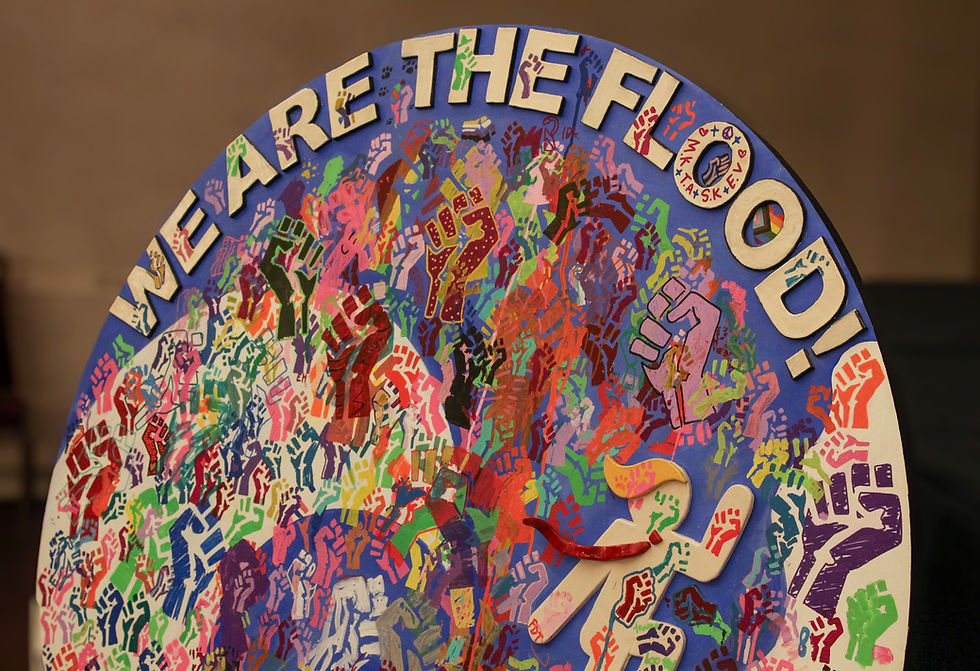Opinion: Goudy, students need to reduce waste from takeout
- Collegian staff
- Mar 7, 2021
- 4 min read
Updated: Oct 25, 2021
Piper Lehr
Staff writer

The 2020-21 school year has seen Willamette University undergo heaps of much-needed COVID-19 safety precautions in order to prepare for the slew of students and staff arriving on-campus. The Goudy Commons building is no exception to these changes. The protections that our administration issued for the dining hall included limiting the amount of students allowed inside at once, only allowing two students to sit at a single table, putting plexiglass on the counters and placing markers six feet apart on the floor for students to stand on. These precautions have all been helping Goudy operate well, but one safety measure, while ultimately the right decision, has led to some downsides. Pre-pandemic, one could only acquire takeout for breakfast and lunch, and the option was not as frequently used because there were no restrictions on in-person dining. Post-pandemic, however, Goudy has been offering takeout for all three meals. Additionally, students (as they should be) have been more incentivised than ever to grab takeout. Necessarily, this means that we should be wary of the inevitable increase in waste coming out of Goudy-more takeout means more disposable materials purchased. But this is not just a Goudy issue. Willamette students should also be putting more of an effort into being more environmentally friendly. As a whole, we can, and should, be doing better to prevent climate change.
One of the biggest changes that Goudy has made in regards to takeout measures is that they have started offering students paper bags. In theory, they allow students to carry all of their takeout boxes in one convenient place. While Goudy made the right decision in choosing paper over plastic, the way grab-n-go is organized only takes advantage of one of the two environmental benefits of paper bags.
Firstly, [paper bags are recyclable, whereas plastic is not]. This benefit is easy to take advantage of with Goudy’s new layout. They have two recycling bins inside the building-one next to the main dining area, and another in the back next to the reserved section. Thus, all one needs to do is make the conscious choice to throw their paper bags into the correct bin.
However, [a BBC article based on a research paper] found in its analysis that “the key to reducing the impact of all carrier bags—no matter what they are made of—is to reuse them as much as possible.” Thus, paper bags are more environmentally friendly than plastic ones because plastic bags are single-use, whereas paper bags can be reused as many as three times. Goudy’s new layout does nothing to capitalize on this benefit. When one enters, they are greeted by a table full of paper bags and are encouraged to take a new bag each trip. This is an issue because paper bags require substantially more energy to manufacture than plastic ones—four times as much, to be exact. According [to the research paper], in order to make paper bags, “Forests must be cut down, and then the subsequent manufacturing of bags produces greenhouse gasses. Paper bags generate 70% more air and 50 times more water pollutants than plastic bags.” Additionally, paper bags weigh more than plastic ones, so it takes more trucks to transport paper bags to and from factories-seven for every one required to carry plastic ones. Thus, unless Goudy can find a way to get students to reuse their paper bags, we may as well be using single-use plastic bags at this point; the destruction produced would be about equivalent. “Many people forget to bring their reusable bags on their weekly supermarket trip, and end up having to buy more bags at the till...this will have a much bigger environmental impact compared with just choosing to use paper, plastic, or cotton,” concluded the BBC.
That’s not even to mention the takeout containers that Goudy is now using. According [to the Oregon Metro], “The fibres are impregnated with the moisture-resistant plastic to keep them from disintegrating or becoming contaminated with food.” This translates to “grease stains make takeout containers unable to be recycled.” There’s nothing that students can do to compensate for the amount of takeout boxes that they use. Unlike paper bags, these have to end up in the landfill. This is problematic because all Goudy food is handed out in these containers, and it’s not uncommon for students to have to take more than one box per trip.
So what can be done about the waste? I’d like to start off by saying that this is not entirely Goudy’s fault—Willamette students need to be held accountable, too. By Feb. 11, the Residence Hall Association (RHA) had issued tote bags to each and every on-campus student, and I have yet to see a single person actually make use of them. As mentioned, the key to reducing waste is to reuse bags as much as possible, and totes make this easy. They’re durable and, I might add, easier to carry because of the handles. Additionally, students should be making more of an effort to recycle their paper bags. Goudy can help by adding a recycling bin inside the area where students collect their food, and by increasing visibility with signs encouraging students to recycle. However, this will help only inasmuch as students are willing to take the extra mile to choose the correct bin. But Goudy also needs to take some responsibility. They need to stop encouraging students to take new paper bags each trip, and find ways to minimize the amount of takeout boxes that students use.
Climate change is an ever-important issue, and this is highlighted by the ice storms and wildfires that the Salem community has had to go through this year. If there is something that we can be doing to help stop events such as these from occurring in the future, we should be doing it.




Comments